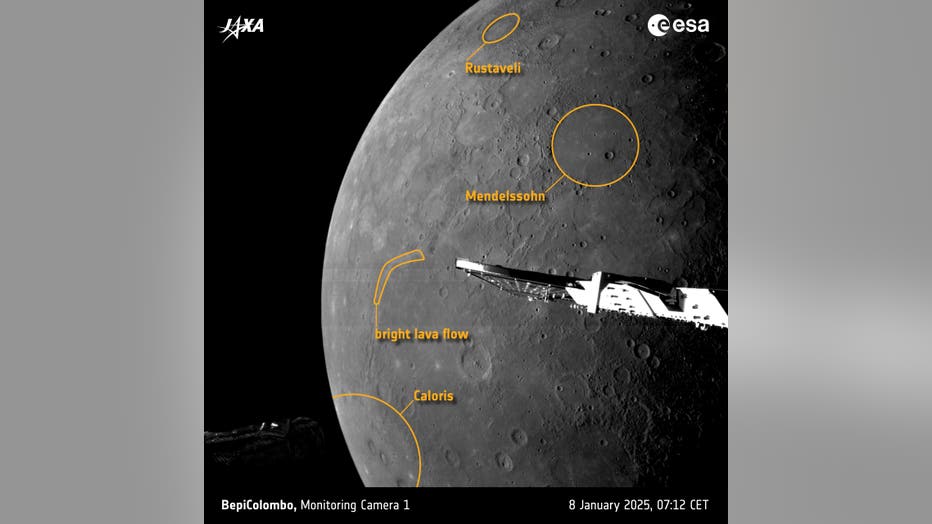European spacecraft beams back new photos of Mercury

Watch Mercury fly by the sun
An orbiter captured stunning imagery of the planet Mercury appearing to pass close by the sun. (European Space Agency via FOX Weather)
A European and Japanese spacecraft has captured some of the clearest images yet of Mercury’s north pole, including its permanently shadowed craters and vast volcanic plains. The BepiColombo spacecraft came within 183 miles (295 kilometers) of Mercury’s surface during its sixth and final flyby, the European Space Agency announced Thursday.
The stunning snapshots reveal a closer look at the solar system’s smallest and innermost planet, highlighting Mercury's largest impact crater, which spans more than 930 miles (1,500 kilometers).
Mission milestone for Mercury exploration
This close encounter marks the final flyby for BepiColombo before the spacecraft enters orbit around Mercury late next year. The mission, a collaboration between the European and Japanese space agencies, aims to provide unprecedented data about Mercury’s geological history, magnetic field, and poles.

This is one of a series of images taken by the ESA/JAXA BepiColombo mission on 8 January 2025 as the spacecraft sped by for its sixth and final gravity assist manoeuvre at the planet. After flying over the planet's north pole, the spacecraft had clea
BepiColombo carries two orbiters—one designed by the European Space Agency and the other by Japan—that will circle Mercury’s poles once it settles into orbit.
Honoring a pioneer in space exploration
The spacecraft is named after Giuseppe "Bepi" Colombo, an Italian mathematician who played a crucial role in NASA’s Mariner 10 mission to Mercury in the 1970s. Colombo’s contributions also extended to tethered satellite projects for the Italian Space Agency.
This milestone mission continues Colombo’s legacy by navigating Mercury’s harsh environment to uncover the secrets of one of the solar system’s least understood planets.
The Source:
Information based on the Associated Press article and official updates from the European Space Agency.

